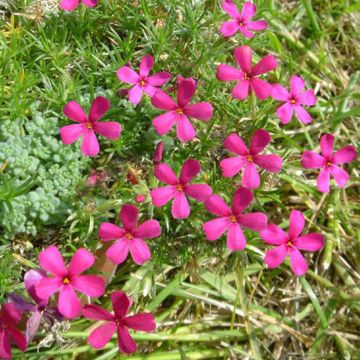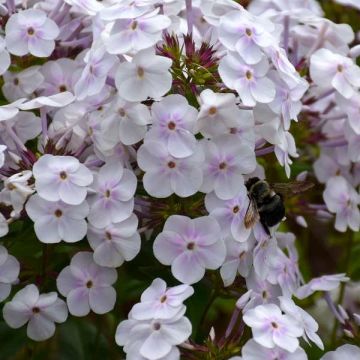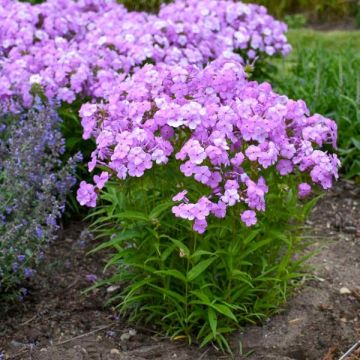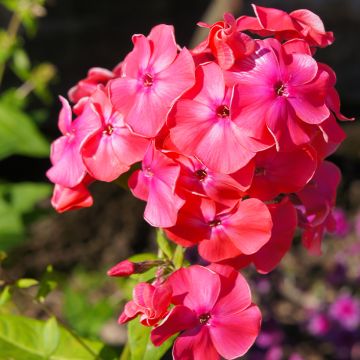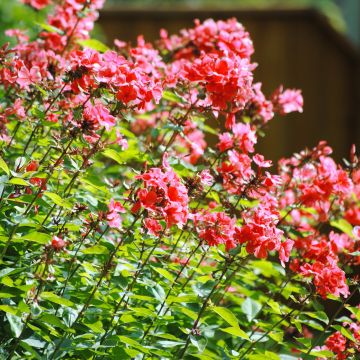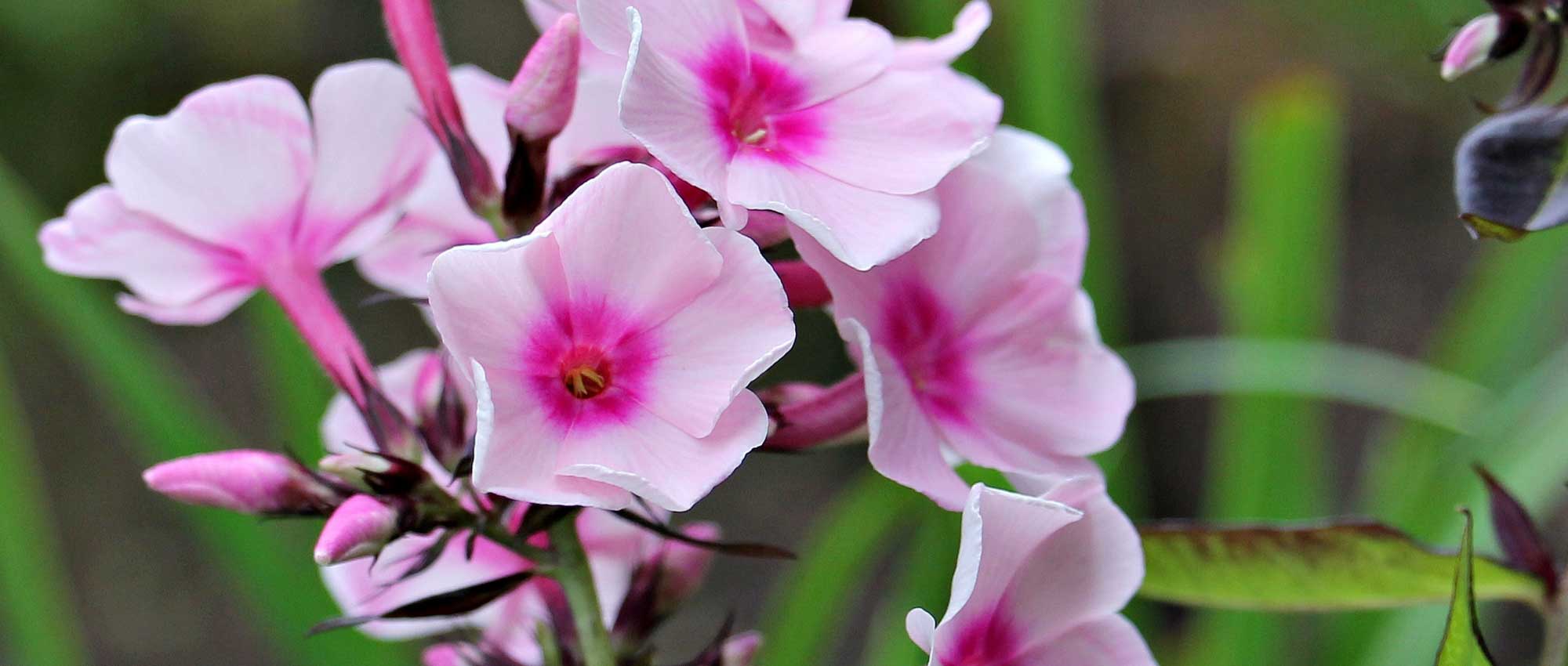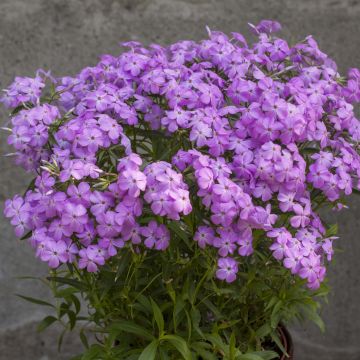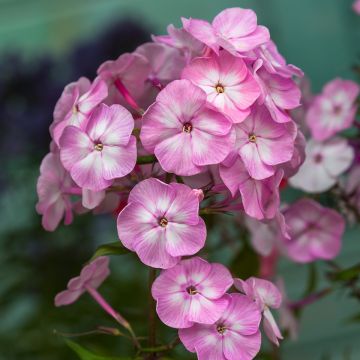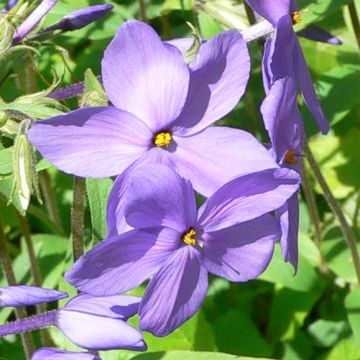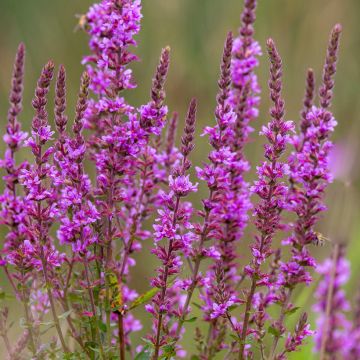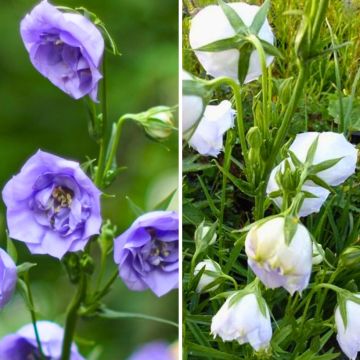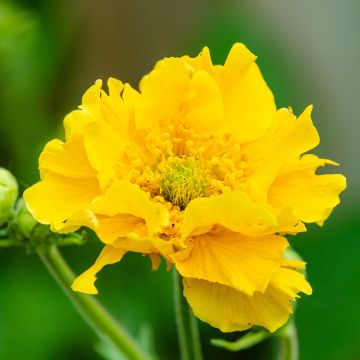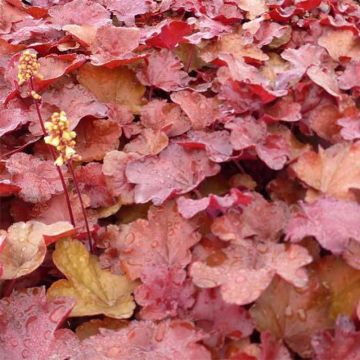

Phlox paniculata Tiara
Phlox paniculata Tiara
Phlox paniculata Tiara
Garden Phlox, Summer Phlox, Perennial Phlox
The different buckets of phlox received in March 2020 were in a sad state. Reported to Promesses de fleurs, the response was that the flowers were in vegetative rest and that patience was needed. I believe the young plants are very patient as they are still at rest. Perhaps we need to wait for winter for the cold to awaken them.!!!!!!!!! It's a shame, these are the first flowers received that have not recovered.
Christine, 16/09/2020
Special offer!
Receive a €20 voucher for any order over €90 (excluding delivery costs, credit notes, and plastic-free options)!
1- Add your favorite plants to your cart.
2- Once you have reached €90, confirm your order (you can even choose the delivery date!).
3- As soon as your order is shipped, you will receive an email containing your voucher code, valid for 3 months (90 days).
Your voucher is unique and can only be used once, for any order with a minimum value of €20, excluding delivery costs.
Can be combined with other current offers, non-divisible and non-refundable.
Why not try an alternative variety in stock?
View all →This plant carries a 12 months recovery warranty
More information
We guarantee the quality of our plants for a full growing cycle, and will replace at our expense any plant that fails to recover under normal climatic and planting conditions.
Would this plant suit my garden?
Set up your Plantfit profile →
Description
Phlox paniculata 'Tiara' is a recent variety of Phlox paniculata, with a medium-sized habit, offering exquisite flowering. Its white flowers are double and exude a delightful fragrance. They are so numerous that they crowd together on pyramidal and billowing panicles, adorned with pale green or cream shades, emerging from dark green foliage. This charming perennial blooms all summer in moist soil and sunlight. Its wonderful flowers are simply perfect for bouquets.
Phlox paniculata 'Tiara' belongs to the family Polemoniaceae. It is a herbaceous perennial plant with a woody stump, forming a bushy clump with a rather sprawling habit, composed of leafy stems. The plant will not exceed 50 cm (20in) in height when in bloom and 55 to 60 cm (22 to 24in) in width. The stiff and sturdy stems are covered with alternate, simple, ovate and lanceolate dark green but vibrant leaves, measuring 12 cm (5in) in length. The flowering begins in mid-July, at the height of summer, and continues until September, as long as faded inflorescences are removed. The small flowers initially have unfused petals, slightly tinged with green and cream. The corolla opens more widely at full bloom, measuring approximately 3.5 cm (1in) in diameter. They are grouped at the end of the erect, very dense and pyramidal panicles, 15 cm (6in) in length, which are wonderfully fragrant. The flowering is melliferous and nectariferous.
Phlox paniculata is a perennial plant commonly found in cottage gardens, as their legendary simplicity and generosity are almost unmatched in perennial borders. They go well with Monardas or Daisies. In a white garden, Phlox 'Tiara' can be paired with airy asters like 'Miracle Blanc' or Aster pringlei Monte Cassino, border daylilies of the same tone, or roses like 'Jacqueline du Pré' or 'Boule de Neige'. The border can be punctuated with silver or grey foliage: artemisias, cinerarias, Stachys or dusty millers. Phlox 'Tiara' is a top-notch variety for your bouquets.
Phlox paniculata Tiara in pictures
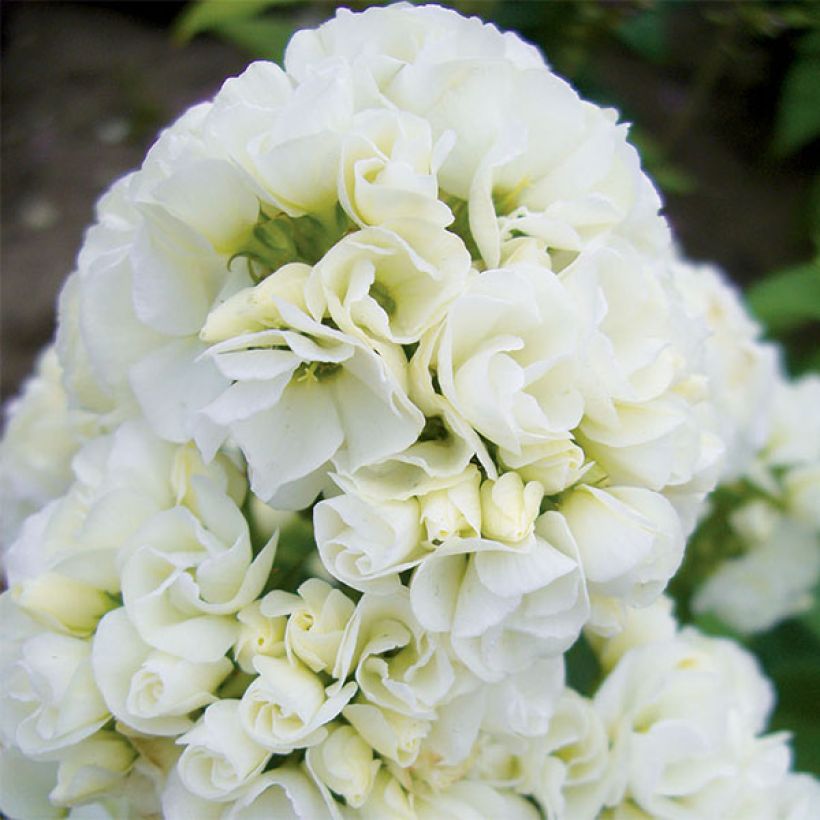

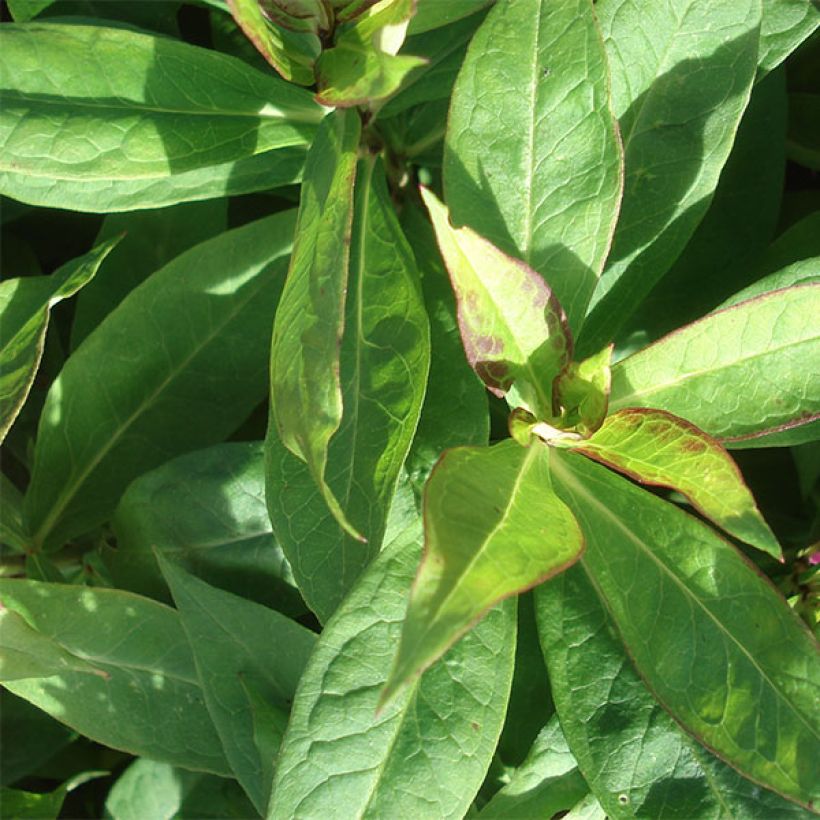

Flowering
Foliage
Plant habit
Botanical data
Phlox
paniculata
Tiara
Polemoniaceae
Garden Phlox, Summer Phlox, Perennial Phlox
Cultivar or hybrid
Other Phlox
View all →Planting and care
Phlox paniculata are easy to grow. Phlox 'Tiara' will prefer a damp and rich soil, even clay which is well-drained. It needs sun to flower well. Planted in the sun in a climate with hot summers, it will require regular watering and mulching at the base. Pruning the faded inflorescences promotes a second flowering at the end of the season. Protect young plants from slugs, which are fond of their tender shoots.
Planting period
Intended location
Care
Planting & care advice
-
, onOrder confirmed
Reply from on Promesse de fleurs
Similar products
Haven't found what you were looking for?
Hardiness is the lowest winter temperature a plant can endure without suffering serious damage or even dying. However, hardiness is affected by location (a sheltered area, such as a patio), protection (winter cover) and soil type (hardiness is improved by well-drained soil).

Photo Sharing Terms & Conditions
In order to encourage gardeners to interact and share their experiences, Promesse de fleurs offers various media enabling content to be uploaded onto its Site - in particular via the ‘Photo sharing’ module.
The User agrees to refrain from:
- Posting any content that is illegal, prejudicial, insulting, racist, inciteful to hatred, revisionist, contrary to public decency, that infringes on privacy or on the privacy rights of third parties, in particular the publicity rights of persons and goods, intellectual property rights, or the right to privacy.
- Submitting content on behalf of a third party;
- Impersonate the identity of a third party and/or publish any personal information about a third party;
In general, the User undertakes to refrain from any unethical behaviour.
All Content (in particular text, comments, files, images, photos, videos, creative works, etc.), which may be subject to property or intellectual property rights, image or other private rights, shall remain the property of the User, subject to the limited rights granted by the terms of the licence granted by Promesse de fleurs as stated below. Users are at liberty to publish or not to publish such Content on the Site, notably via the ‘Photo Sharing’ facility, and accept that this Content shall be made public and freely accessible, notably on the Internet.
Users further acknowledge, undertake to have ,and guarantee that they hold all necessary rights and permissions to publish such material on the Site, in particular with regard to the legislation in force pertaining to any privacy, property, intellectual property, image, or contractual rights, or rights of any other nature. By publishing such Content on the Site, Users acknowledge accepting full liability as publishers of the Content within the meaning of the law, and grant Promesse de fleurs, free of charge, an inclusive, worldwide licence for the said Content for the entire duration of its publication, including all reproduction, representation, up/downloading, displaying, performing, transmission, and storage rights.
Users also grant permission for their name to be linked to the Content and accept that this link may not always be made available.
By engaging in posting material, Users consent to their Content becoming automatically accessible on the Internet, in particular on other sites and/or blogs and/or web pages of the Promesse de fleurs site, including in particular social pages and the Promesse de fleurs catalogue.
Users may secure the removal of entrusted content free of charge by issuing a simple request via our contact form.
The flowering period indicated on our website applies to countries and regions located in USDA zone 8 (France, the United Kingdom, Ireland, the Netherlands, etc.)
It will vary according to where you live:
- In zones 9 to 10 (Italy, Spain, Greece, etc.), flowering will occur about 2 to 4 weeks earlier.
- In zones 6 to 7 (Germany, Poland, Slovenia, and lower mountainous regions), flowering will be delayed by 2 to 3 weeks.
- In zone 5 (Central Europe, Scandinavia), blooming will be delayed by 3 to 5 weeks.
In temperate climates, pruning of spring-flowering shrubs (forsythia, spireas, etc.) should be done just after flowering.
Pruning of summer-flowering shrubs (Indian Lilac, Perovskia, etc.) can be done in winter or spring.
In cold regions as well as with frost-sensitive plants, avoid pruning too early when severe frosts may still occur.
The planting period indicated on our website applies to countries and regions located in USDA zone 8 (France, United Kingdom, Ireland, Netherlands).
It will vary according to where you live:
- In Mediterranean zones (Marseille, Madrid, Milan, etc.), autumn and winter are the best planting periods.
- In continental zones (Strasbourg, Munich, Vienna, etc.), delay planting by 2 to 3 weeks in spring and bring it forward by 2 to 4 weeks in autumn.
- In mountainous regions (the Alps, Pyrenees, Carpathians, etc.), it is best to plant in late spring (May-June) or late summer (August-September).
The harvesting period indicated on our website applies to countries and regions in USDA zone 8 (France, England, Ireland, the Netherlands).
In colder areas (Scandinavia, Poland, Austria...) fruit and vegetable harvests are likely to be delayed by 3-4 weeks.
In warmer areas (Italy, Spain, Greece, etc.), harvesting will probably take place earlier, depending on weather conditions.
The sowing periods indicated on our website apply to countries and regions within USDA Zone 8 (France, UK, Ireland, Netherlands).
In colder areas (Scandinavia, Poland, Austria...), delay any outdoor sowing by 3-4 weeks, or sow under glass.
In warmer climes (Italy, Spain, Greece, etc.), bring outdoor sowing forward by a few weeks.


































